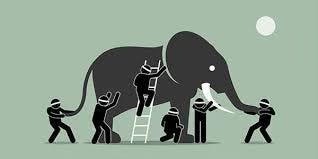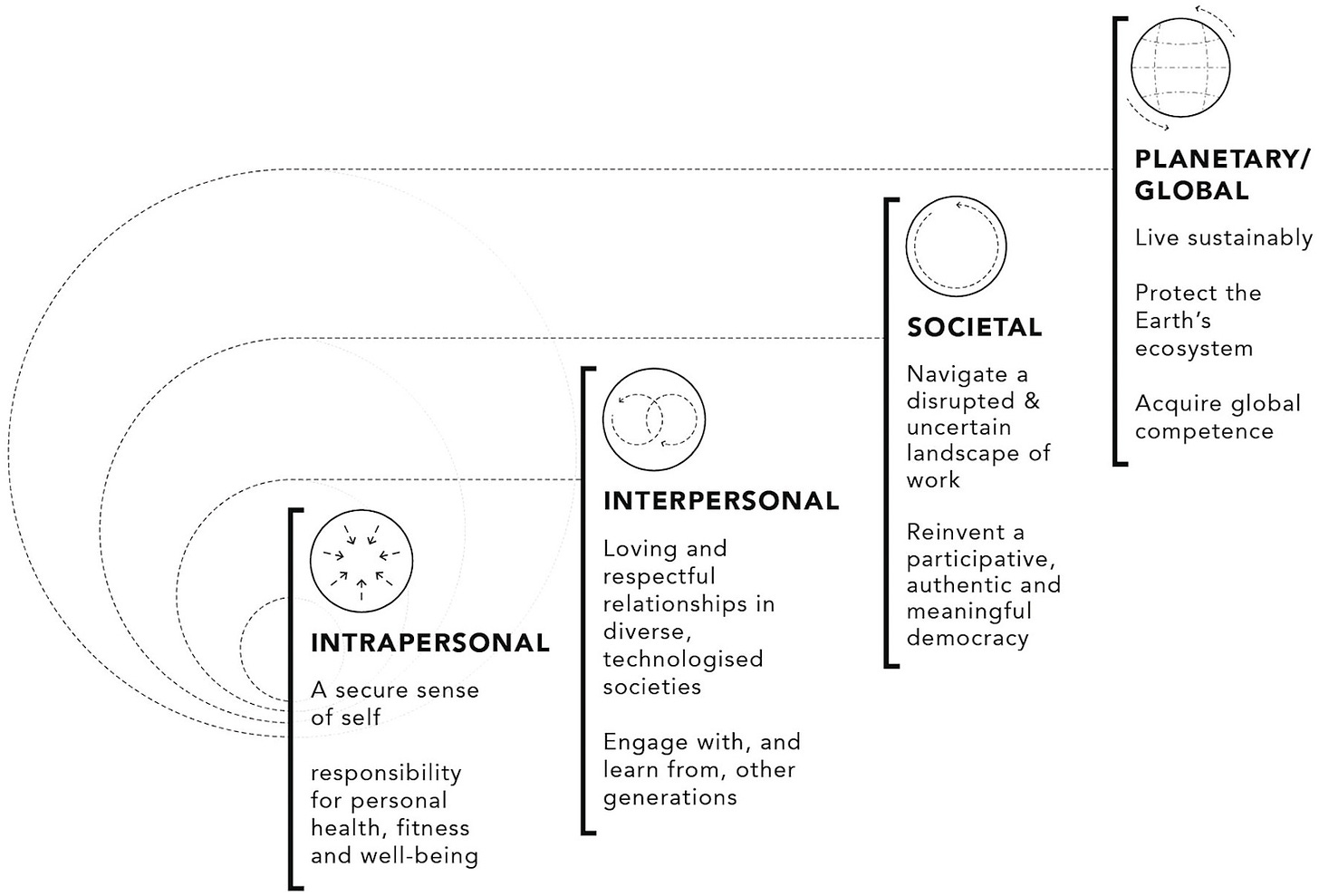Letters from the Future (of Learning): To See the “Educational Elephant,” We Must Stop Being the Six Blind Men
I get to regularly visit the most wonderful schools in the world, so I know from experience that our problem in education isn’t figuring out how to design a super school: it’s discerning how to seed a whole system of them.
Which reminds me of the Indian parable of the six blind men.
They were especially curious about elephants, which they argued about day and night. But their neighbors grew tired of all the squabbling, so they arranged for the men to visit the palace of the Rajah, where they were finally able to touch the creature and describe what they discovered.
"An elephant is smooth and solid like a wall!" the first man declared.
"No; an elephant is like a giant snake," the second man announced.
The third felt the elephant's pointed tusk. "I was right," he decided. "This creature is as sharp and deadly as a spear."
And so it went, as their argument grew louder and louder, until finally an angry voice called out. "
Stop shouting!" It was the Rajah himself. "How can each of you be so certain you are right? The elephant is a very large animal. Each of you touched only one part.
“Perhaps if you put the parts together, you will see the truth.”
This is our challenge, too: we must see the different parts (and scales) of the educational “elephant”-- from the individual to the societal -- in order to stitch them back together into a clearer, more coherent vision that equips us to reimagine the structure and purpose of that thing that, up to now, we have always called ‘school.’
And a growing chorus of voices are suggesting the solution is not only here; it has been hiding in plain sight the whole time.
“Revitalizing education requires a fundamental shift in thinking,” asserted The Economist (of all institutions) in 2022, “away from a traditional, standardized, top-down approach and towards a more integrated, collaborative and personalized one. The idea of a ‘learning ecosystem’ represents this shift.”
Education Reimagined’s Bobbi Macdonald and Emily Liebtag made a similar argument just last week. “It’s increasingly apparent that young people are grappling with growing disconnection, a challenge that extends well beyond traditional schooling and affects the entire landscape of education,” they wrote. “Ecosystems, while the concept isn’t new, provide a timely possibility for a new era in education that nurtures what young people need most right now — connection, belonging, and a deep sense of purpose and place.”
So the way to redesign our sclerotic school systems is by . . . using nature as a model?
In their book Thrive: The Purpose of Schools in a Changing World, Valerie Hannon and Amelia Peterson go even further. “We need to recognize that we are indissolubly a part of a bigger ecology of which we are not the center. We should accept that the era of extractive growth (in relation both to the resources of the planet, and also the value created by companies) is over. We can no longer conceive of the quality of human life without seeing ourselves as a part of nature.”
So what, then, is a learning ecosystem?
Hannon and Peterson define it as “a community of interdependent organisms acting in conjunction with the natural environment.”
Education Reimagined describes it as “intentional webs of relational learning which are dynamic, evolving, and enable greater diversity when fostering lifelong learning opportunities.”
And The Economist (I know!) defines it as “a diverse, collaborative and dynamic network of stakeholders that enables greater access to a range of learning opportunities and helps young people achieve positive learning and wellbeing outcomes.”
Hopeful stuff, in other words -- and perhaps our first collective steps towards a fuller accounting of the educational elephant in ways that can help us piece together the greater truth. Yet if we are to truly use nature as a model in redesigning our local communities to holistically support the learning and growth of young people, there’s more work that needs to be done.
For example, what are the central design principles of a thriving learning ecosystem?
What is the optimal marriage of learning science and living systems design?
In which states and local communities would the best initial prototypes be piloted?
In what ways can the evidence of those prototypes best be shared and disseminated?
And what would be the best measures of those systems’ vitality, health and effectiveness?
To that end, I’ll be producing some new short films in the coming months that help paint this picture a little more clearly. Organizations like Education Reimagined and the Community Weaving Framework are actively helping to support the work of the earliest adopters among us. And scholars like Valerie Hannon are sharing frameworks like the one below, to elucidate what the renewed purpose of schools must be in our rapidly changing world.
In this way, ecosystems are a particularly exciting and apt new metaphor for us to consider, since, as Hannon points out, “ecosystems do not scale; they grow. And while natural and social ecosystems are different, we can think about their growth in the same way: it is all about creating the right conditions.
“So where do we start?”
This blog post has been shared by permission from the author.
Readers wishing to comment on the content are encouraged to do so via the link to the original post.
Find the original post here:
The views expressed by the blogger are not necessarily those of NEPC.



